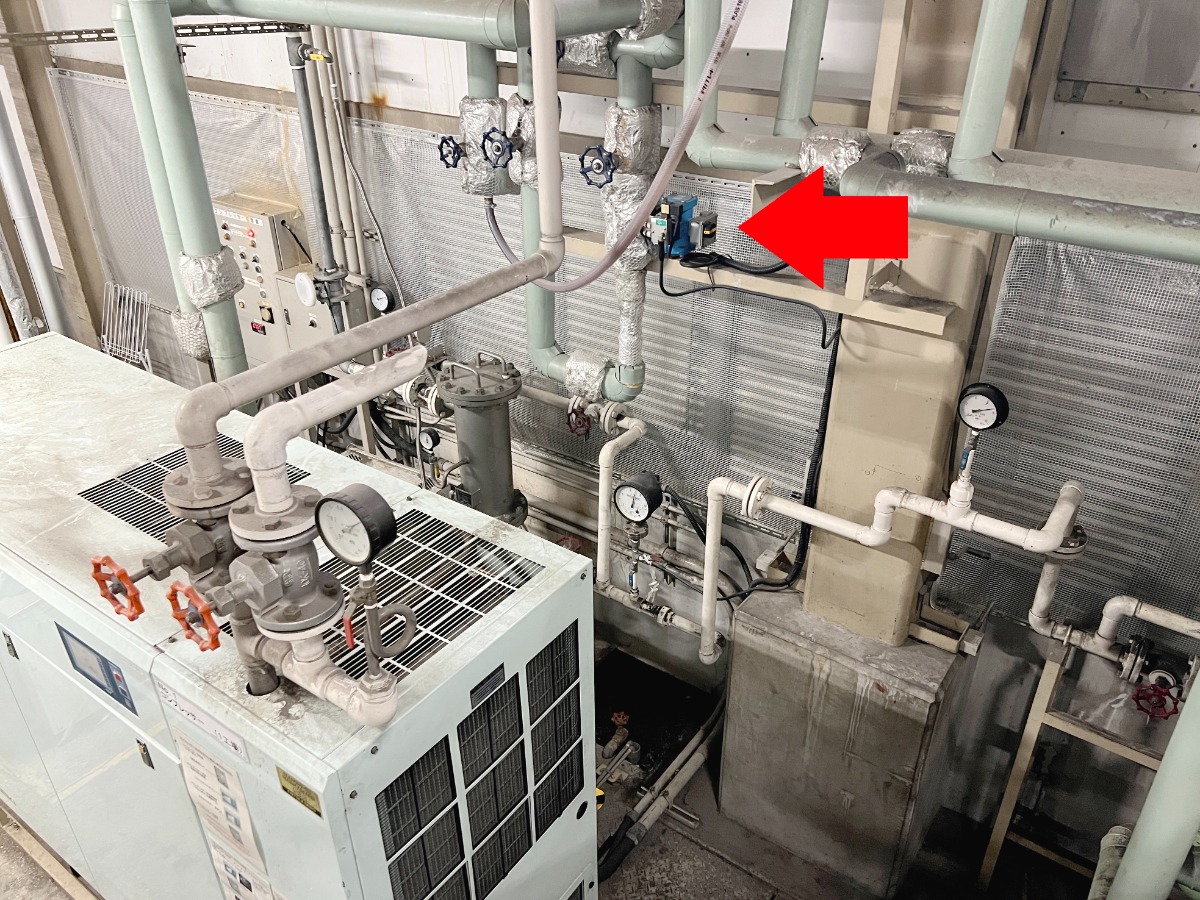Basic Concept
The Nisshinbo Group's Business Conduct Guidelines include Awareness and Concern towards its environmental impact. The Group promotes water conservation, recycling, and other activities with an eye to improving the quality of resource recycling, and faithfully realizes a safe and secure society for all people.
【Main measures】
- ① Promoting water conservation activities through ISO 14001 activities
- ② Expanding activities such as the introduction of water-saving equipment at manufacturing sites, reduction of water consumption and reuse of treated wastewater
- ③ Efforts toward sustainable water intake at overseas sites with different water availability conditions, such as use of rainwater and water recycling (returning to groundwater)
- ④ Activities in the Textiles business to purify well water that has been drained and deliver a portion of it to neighboring residents free of charge
- ⑤ Contributing to Japan and overseas wastewater treatment fields by providing microbial carriers for water treatment in the Chemicals business
Please refer to "Promotion System" in "Environmental Management" for the promotion system.
Specific Initiatives of The Nisshinbo Group
Assessment of the 5th Three-Year Environmental Targets (to be achieved by FY2024)
The Nisshinbo Group established the 5th Three-Year Environmental Goals (5th Sustainability Promotion Plan) with the fiscal year ending FY2024 as the target year, setting the promotion of environmental management as a priority activity and establishing the following KPIs to promote reduction of water usage per unit of sales.
Reduction of water usage per unit of sales: Reduce by 65% or more compared to FY2014
As a result of systematic measures to manage reductions through the PDCA cycle, the Group's reduction of water usage in FY2024 was reduced by 78% compared to FY2014. The main reasons for the reduction were the transfer of the TMD Group, which was a consolidated subsidiary, and reduced production in the Textiles business.
Assessment of the 6th Three-Year Environmental Targets (to be achieved by FY2027)
In the 6th Three-Year Environmental Targets (6th Sustainability Promotion Plan) with FY2027 as the target year, we raised the KPI values based on the initiatives of the 5th term as milestones for achieving the medium-term environmental targets.
Reduction of water usage per unit of sales: Reduce by 77% or more compared to FY2014
Please refer to "Environmental Management" for details regarding of the "3-Year Environmental Targets."
Please refer to "Sustainability Promotion Plan and KPIs" for details regarding of the "Sustainability Promotion Plan."
Use of Water Resources
The Nisshinbo Group's water consumption in FY2024 was 5,753 thousand m3, a decrease of 8% from the previous fiscal year. Water consumption per sales was 11.6 m3/million yen, a decrease of 1% from the previous fiscal year. The transfer of the TMD Group, which was a subsidiary in the brake business, resulted in a significant decrease in water consumption for the Company's group.
The amount of water recycled in FY2024 was 848 thousand m3, a 1% increase from the previous fiscal year.
Water Usage and Water Usage per Unit of Sales
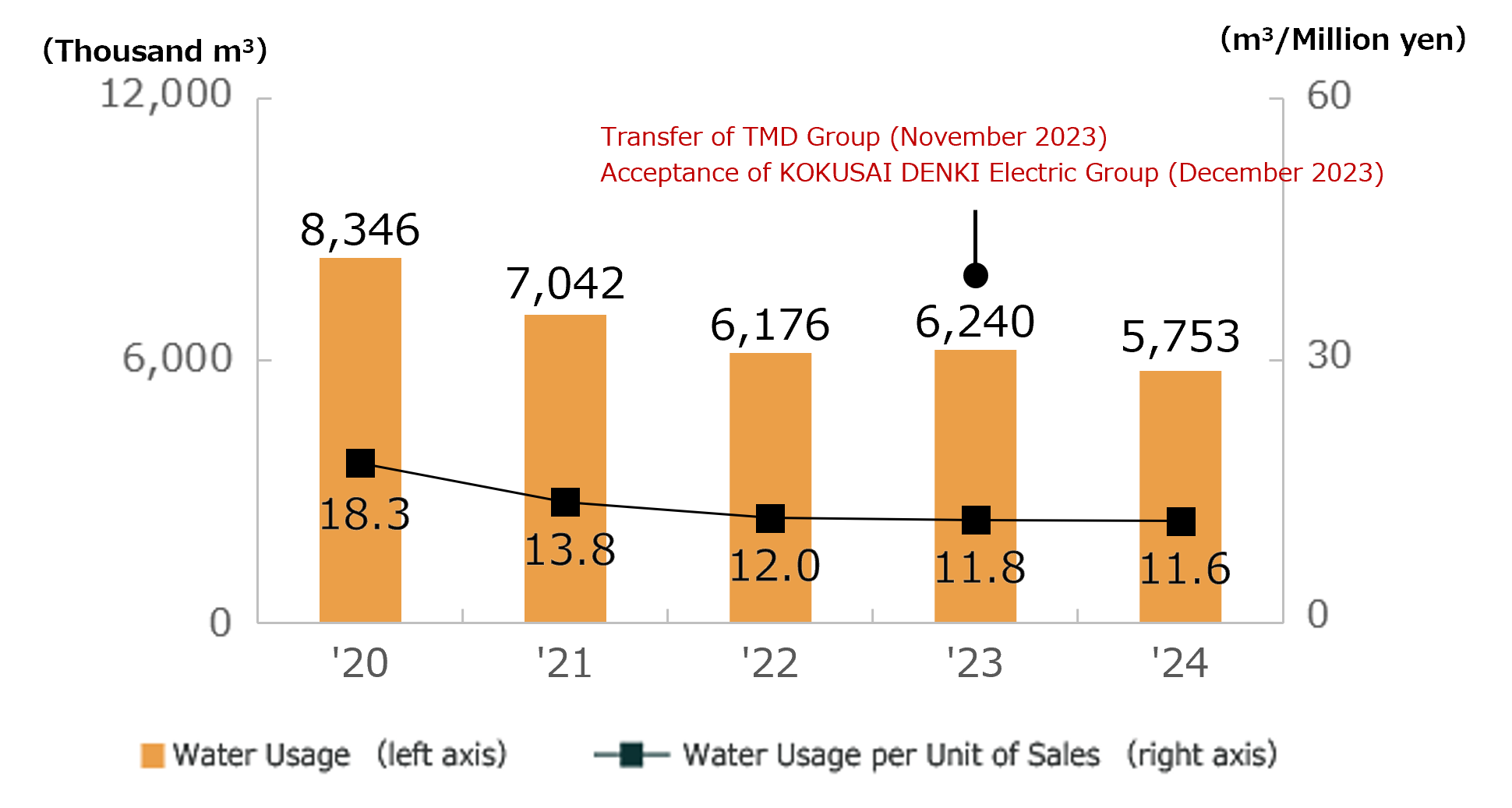
*1 Nisshinbo Holdings Inc. (the "Company") excluded TMD Group, which was a consolidated subsidiary, from the scope of consolidation, due to its transfer, which took place on November 30, 2023. As a result, data for TMD Group is included in the aggregation up to November 2023.
*2 On December 27, 2023, the Company included KOKUSAI DENKI Electric Group within its scope of consolidation, and data for the group is included from FY2024.
*3 On November 28, 2024, the Company included ARGONICS GmbH and ARGONAV GmbH within the scope of consolidation as subsidiaries in the Wireless and Communications business. However, data for these companies is not included in the FY2024 data.
Trends of Water Recycled
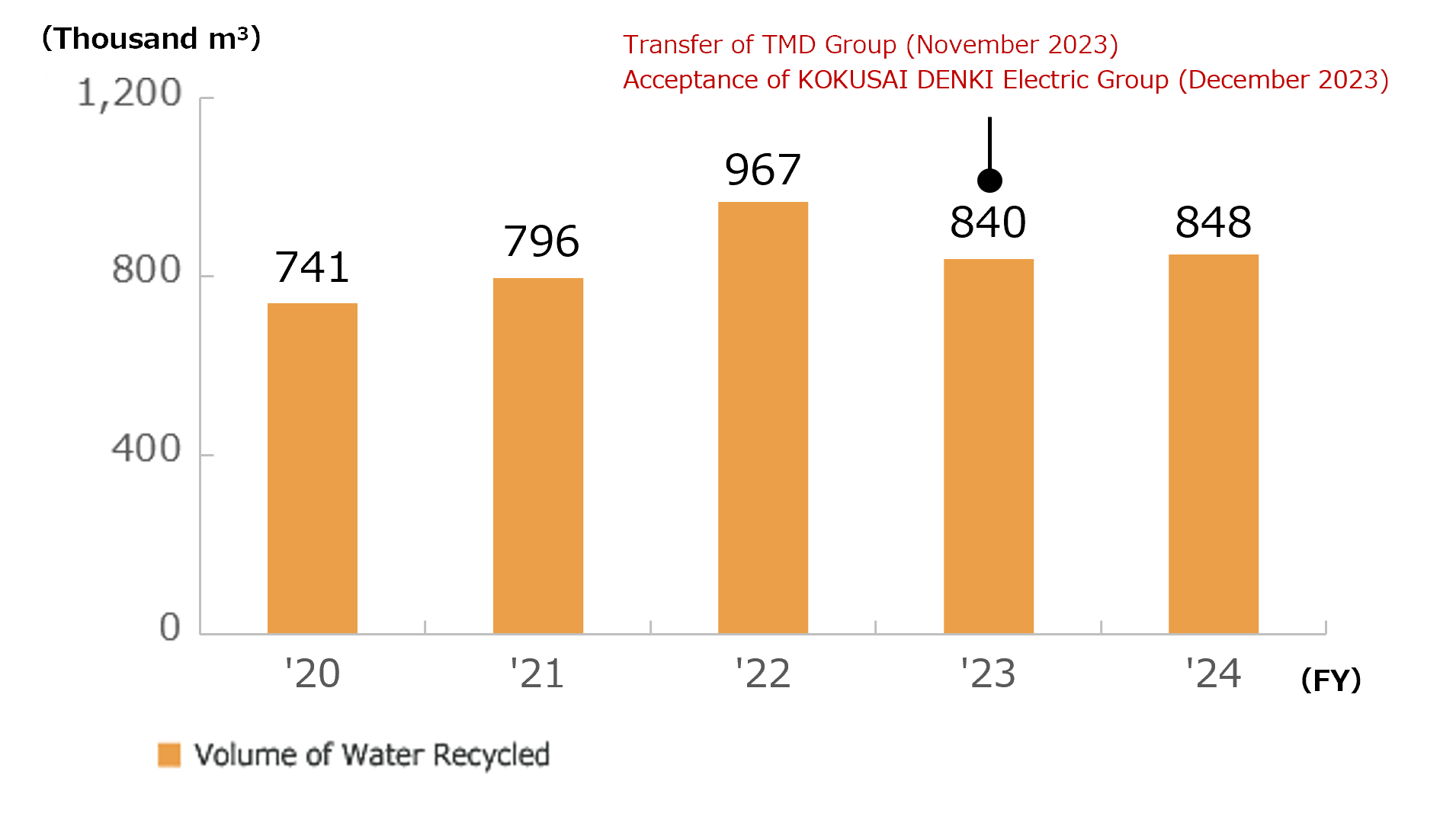
*1 Nisshinbo Holdings Inc. (the "Company") excluded TMD Group, which was a consolidated subsidiary, from the scope of consolidation, due to its transfer, which took place on November 30, 2023. As a result, data for TMD Group is included in the aggregation up to November 2023.
*2 On December 27, 2023, the Company included KOKUSAI DENKI Electric Group within its scope of consolidation, and data for the group is included from FY2024.
*3 On November 28, 2024, the Company included ARGONICS GmbH and ARGONAV GmbH within the scope of consolidation as subsidiaries in the Wireless and Communications business. However, data for these companies is not included in the FY2024 data.
Trends in Volume of Water Usage by Business
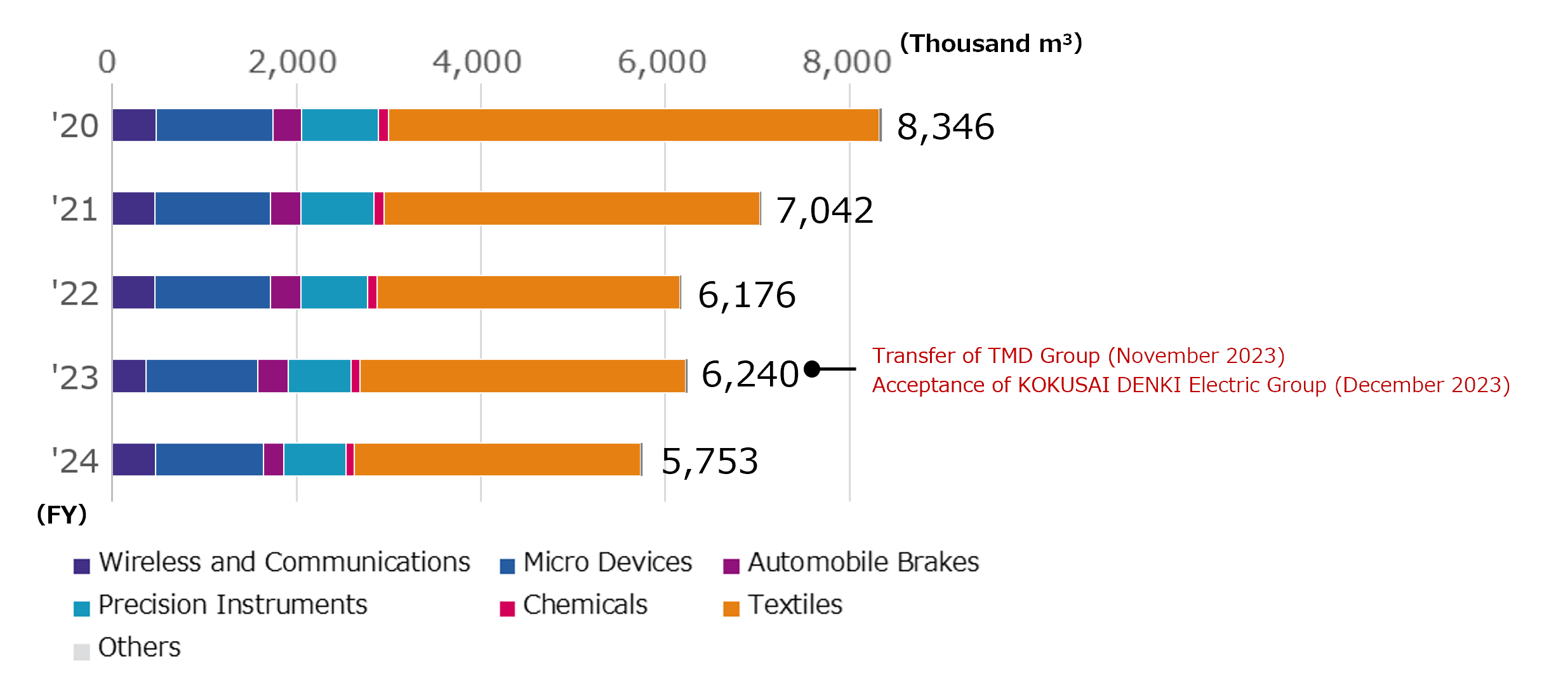
*1 Nisshinbo Holdings Inc. (the "Company") excluded TMD Group, which was a consolidated subsidiary, from the scope of consolidation, due to its transfer, which took place on November 30, 2023. As a result, data for TMD Group is included in the aggregation up to November 2023.
*2 On December 27, 2023, the Company included KOKUSAI DENKI Electric Group within its scope of consolidation, and data for the group is included from FY2024.
*3 On November 28, 2024, the Company included ARGONICS GmbH and ARGONAV GmbH within the scope of consolidation as subsidiaries in the Wireless and Communications business. However, data for these companies is not included in the FY2024 data.
Understanding and Monitoring Water Risks
The Nisshinbo Group conducts water risk assessments of all of the Group's business sites and main supply chains using the AQUEDUCT Water Risk Atlas* published by the World Resources Institute (WRI).
As a result of the AQUEDUCT assessment, six of the Group's business sites (Nisshinbo Mechatronics India Private Limited in India, NISSHINBO COMPREHENSIVE PRECISION MACHINING (GURGAON) PRIVATE LIMITED, and Saeron Automotive (Beijing) Co., Ltd. and Saeron Automotive (Yantai) Co., Ltd. in China, and PT. Nikawa Textile Industry, PT. Nisshinbo Indonesia and PT. Naigai Shirts Indonesia in Indonesia) are classified as "Extremely high" areas. At view point of the current water consumption at these sites, the Group estimates that it is not highly likely to have a significant impact on its business activities.
In addition, 11 sites of its main supply chain companies (Indonesian, Cambodian and Chinese suppliers in Textiles business, and Chinese suppliers, etc. in Automobile Brakes business) are classified as "Extremely high" areas. The Group continues to monitor the situation of those sites and supply chains that have been assessed as "Extremely high."
The Group has also assessed the risk from flooding as of 2050 in its climate change scenario analysis. The Group will promote risk reduction measures to deal with property damage and loss of business due to possible flooding.
Furthermore, in the nature-related risk analysis under the TNFD, Nisshinbo evaluated whether the Group's direct operations and corporate activities in the upstream value chain are located in sensitive areas with regard to water risks in relation to identified material issues.
* AQUEDUCT Water Risk Atlas: Maps based on 12 different water risk indicators, including "physical water stress," "water quality," "water resource regulatory risks," and "reputational risks."
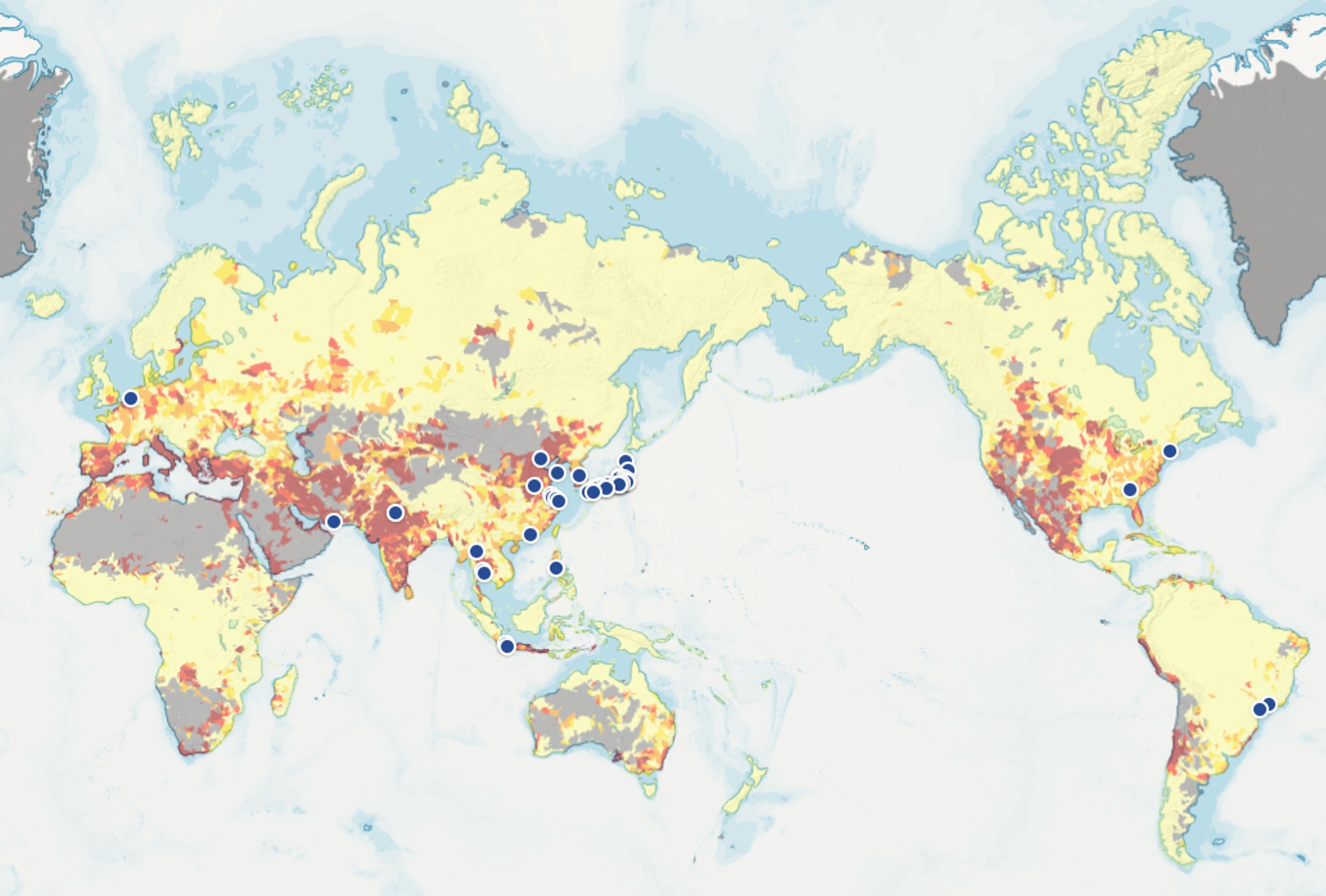
CDP Water Security 2024 Evaluation
Nisshinbo Holdings Inc. discloses environmental information through the CDP. In 2024, Nisshinbo Holdings Inc. responded to the Water Questionnaire and received a B rating (Management Level). The Group will continue to actively address climate change and strengthen transparency and information disclosure in its environmental activities.
The CDP evaluates companies annually using a fair method based on such factors as disclosure comprehensiveness, recognition and management of environmental risks, and goal setting by assigning scores on an eight-point scale (A, A-, B, B-, C, C-, D, D-).
The CDP is an international environmental nonprofit organization established in the UK in 2000. It collaborates with more than 700 financial institutions with assets exceeding US$142 trillion and operates a global environmental information disclosure system. Specifically, in response to requests from investors, companies, governments, and other entities around the world, the CDP sends questionnaires on environmental issues to companies, provides an information disclosure platform, and scores and analyzes the responses.
In 2024, more than 24,800 companies, which account for over 66% of global market capitalization, disclosed data through the CDP, including more than 2,100 companies in Japan, comprising over 70% of prime-listed companies. CDP scores are widely used in investment and procurement decisions through the CDP's website and reports to achieve net zero and a sustainable and resilient economy.

Specific Activities of the Group Companies
Reduction in Groundwater Use
Nagano Japan Radio Co., Ltd. has been working to reduce groundwater consumption by switching from water-cooled to air-cooled air conditioners when updating air conditioners since 2014.
The company's annual groundwater consumption in FY2022 was 315,000 m3, but as a result of the replacement of 18 units in FY2023, groundwater consumption in FY2023 was approximately 204,000 m3, a reduction of approximately 35% (111,000 m3) compared to FY2022.
In addition to this, in FY2024, 12 water-cooled air-conditioners were replaced with air-cooled air-conditioners, reducing groundwater consumption by 40,000 m3/year; in FY2025, the company plans to replace three of the remaining 11 water-cooled air-conditioners it owns.
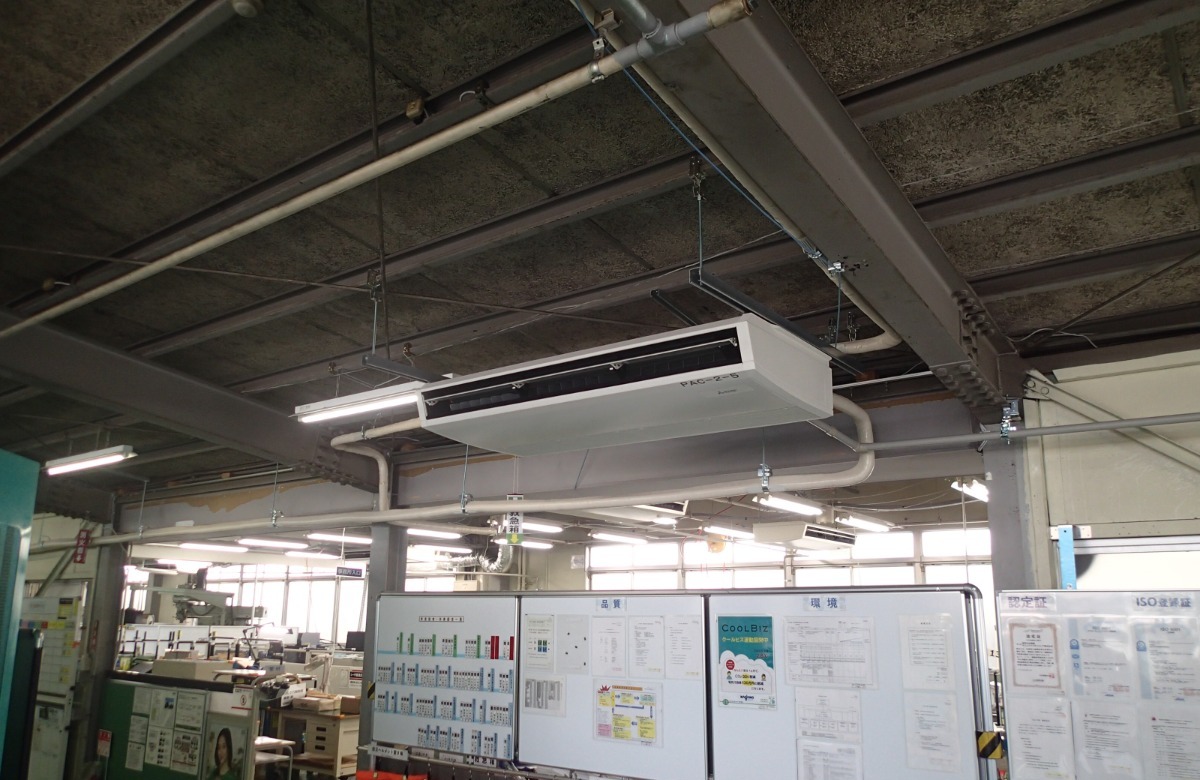
Optimization of Feed Water in the Scrubbers
Sanyo Office of NJ Components Co., Ltd., focused on the ferrite manufacturing process, which accounts for approximately 70% of the water use at the same works, and conducted a survey of the water used by each piece of equipment. As a result, the survey found that the volume of water supplied to the scrubber equipment in the raw material process was extremely high.
The water supply was controlled by a manual valve, which meant that the water flow varied significantly depending on the valve opening. An investigation found that the water supply to the scrubber exceeded the required amount.
As a result, the company reduced water usage by 512 m3/month. By FY2025, the company expects to achieve a reduction of 6,144 m3 in water usage.
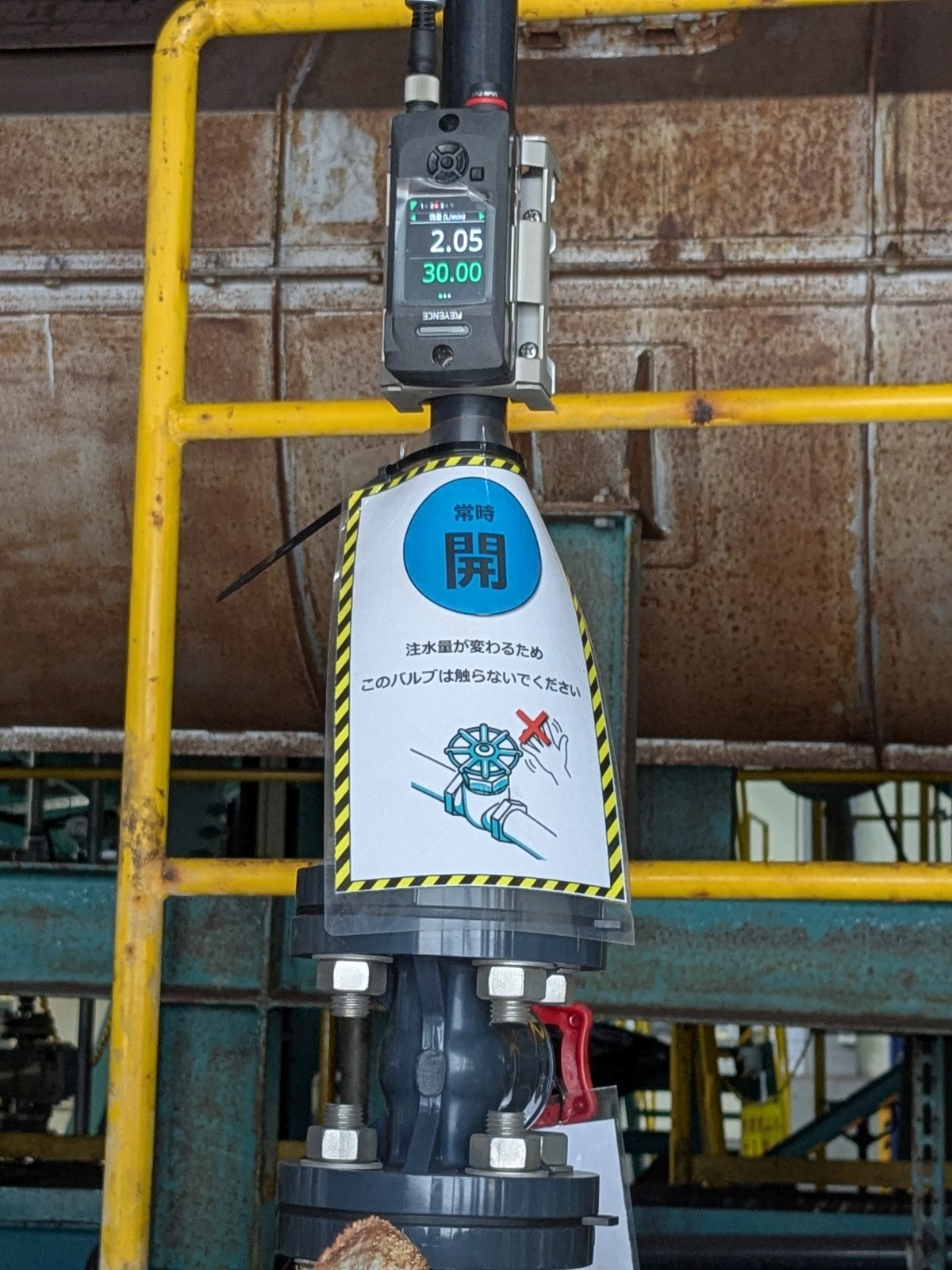
Effective use of water resources by circulating cooling water
At the Kawagoe Plant of Nisshinbo Micro Devices Inc. indirect cooling water for production equipment in Building 217 was conventionally supplied from well water (groundwater) and drained outside the plant after use.
The system of cooling water heated by production equipment and supplying it again to production equipment is costly. For this reason, well water was used for cost considerations, but from the perspective of environmental protection (reduction of water consumption), the wastewater was returned to the receiving water tank and reused.
This resulted in a reduction of approximately 40, 000 m3/year in wastewater and a reduction in the amount of water pumped. In addition, reducing the amount of water pumped has led to a reduction of approximately 6,500 kWh in electricity consumption by the pumping pumps.
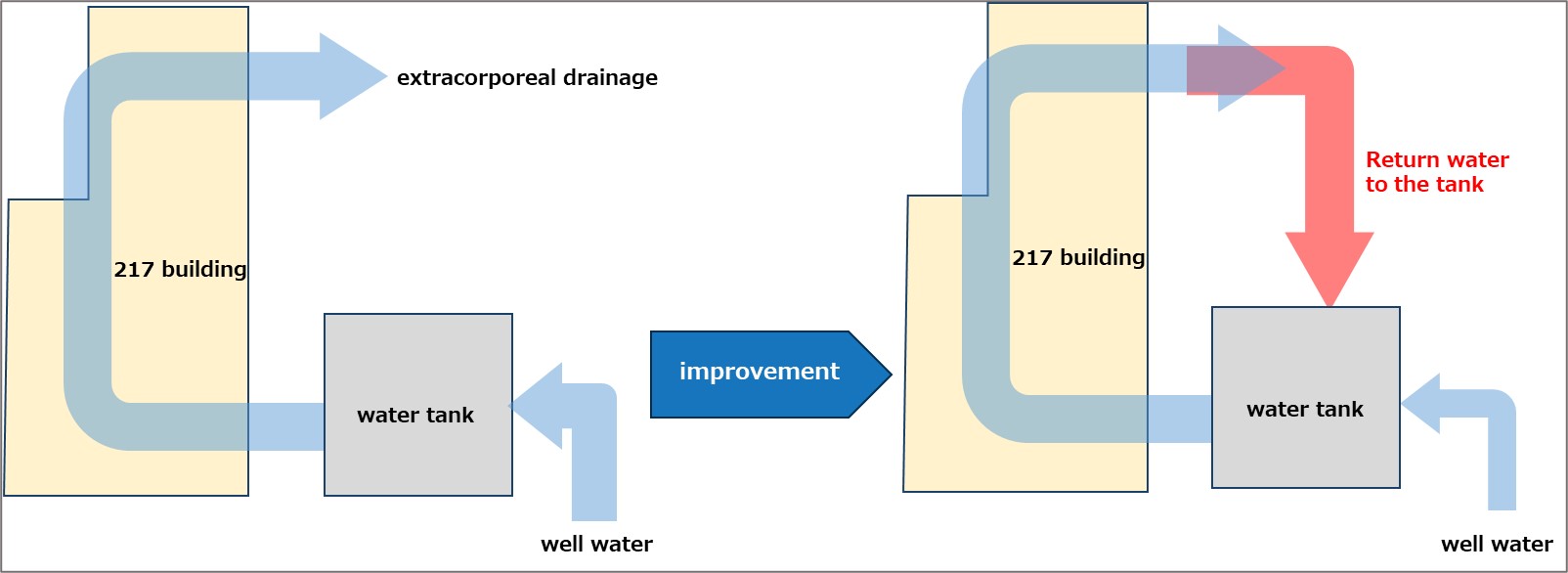
Water Savings Achieved by Changing the Hot Water Control of the External Adjustment Unit Pre-Coil
At the Yashiro Plant of Nisshinbo Micro Devices Inc., changes were made to the preheating coil control of clean room air conditioners, resulting in a reduction of 536 m3/year in water consumption.
The pre-coil that was installed upstream of the outdoor unit prevented freezing of the outdoor unit by circulating warm water when the outdoor temperature dropped. Previously, warm water was continuously circulated until the outdoor temperature rose. However, by monitoring the temperature downstream of the pre-coil and controlling the amount of warm water circulated according to that temperature, the company reduced the amount of excess warm water. In addition, by reducing the amount of hot water used, the company reduced the amount of city gas used to produce hot water by 33,000 m3/year.
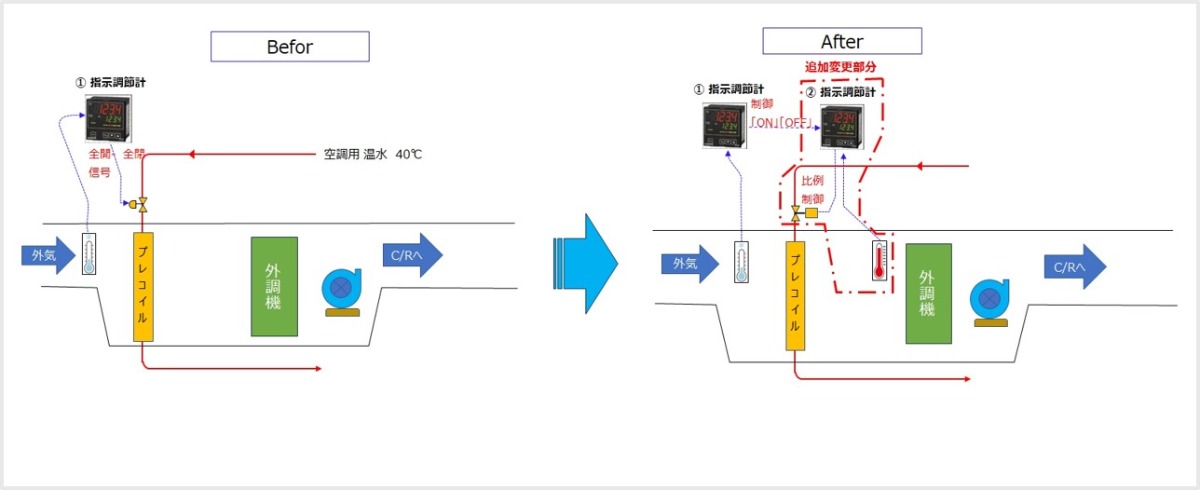
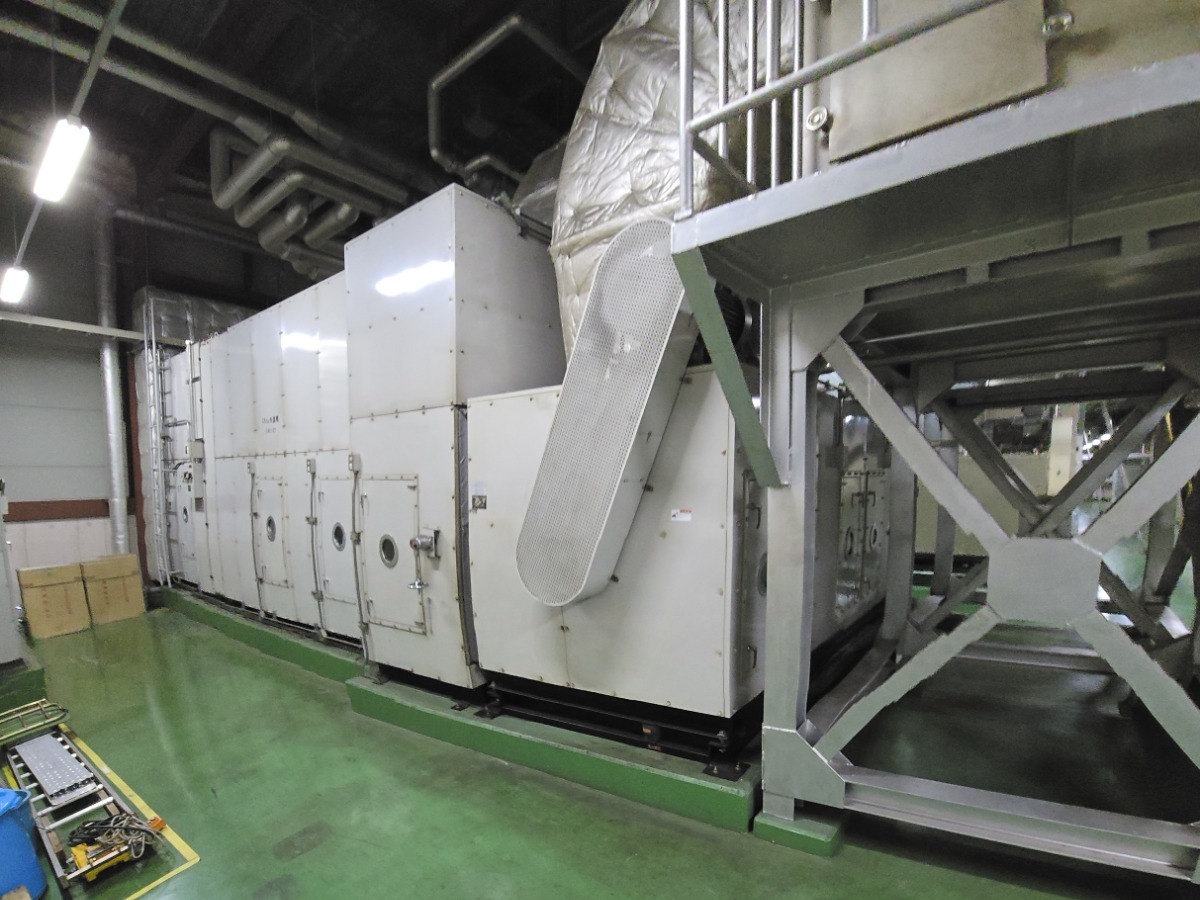
Energy and Water Savings Through Review of Water Pump Settings
At the Miai Machinery Plant of Nisshinbo Mechatronics Inc. the drinking water supplied by Okazaki City is stored in a dedicated water tank and pumped by water pumps to the buildings where it is used.
In order to reduce water consumption and save energy, the settings of the two water pumps for the buildings have been revised to 2024. By changing the head (pressure) setting from 63 m to 53 m, a total of 1,042 m3 of water consumption was reduced, and a total of 1,859 kWh/year of electricity consumption was saved.
The reviewed measures will be horizontally rolled out to all Group sites, leading to a reduction in water consumption per sales through water conservation and a reduction in greenhouse gas emissions through energy conservation with the aim of achieving the targets of the Nisshinbo Group Sustainability Promotion Plan.
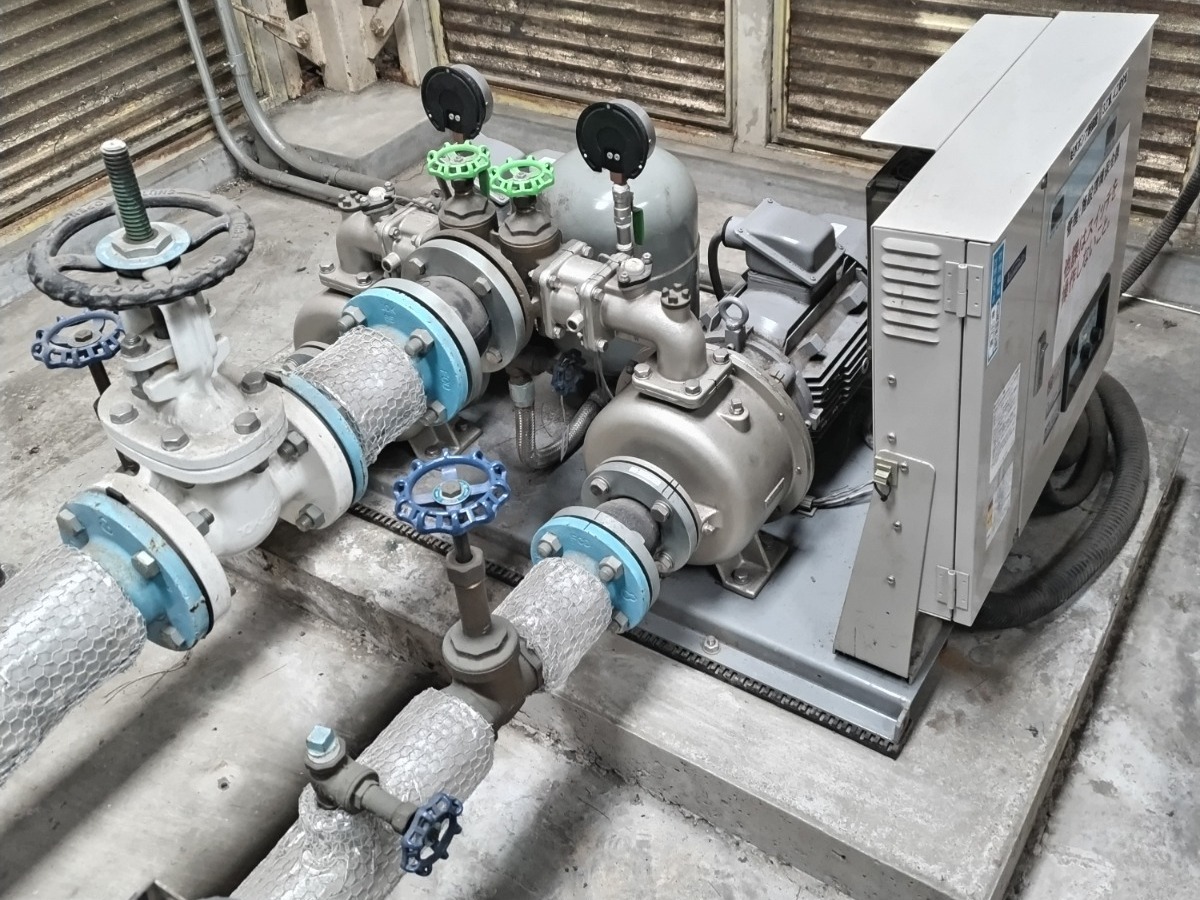
Initiatives to Reduce Water Consumption
The Fujieda Plant of Nisshinbo Textile Inc. uses a large volume of cooling water for the production of nonwovens and for air conditioning the plant. In the past, in order to ensure water supply to the nonwoven production line, excessive water was supplied even during line stoppages.
As an initiative to reduce water consumption, in May 2023, a water level monitoring sensor was installed in the water supply pool, and the equipment was modified so that the pool water level could be automatically controlled by an automatic water supply valve. As a result, excessive water supply during line stoppages was curbed; as a result, water consumption at the plant in FY2024 was 2,034,000 m3, an 11% (258,000 m3) reduction compared to FY2023. The company will continue to make effective use of water resources through kaizen activities.
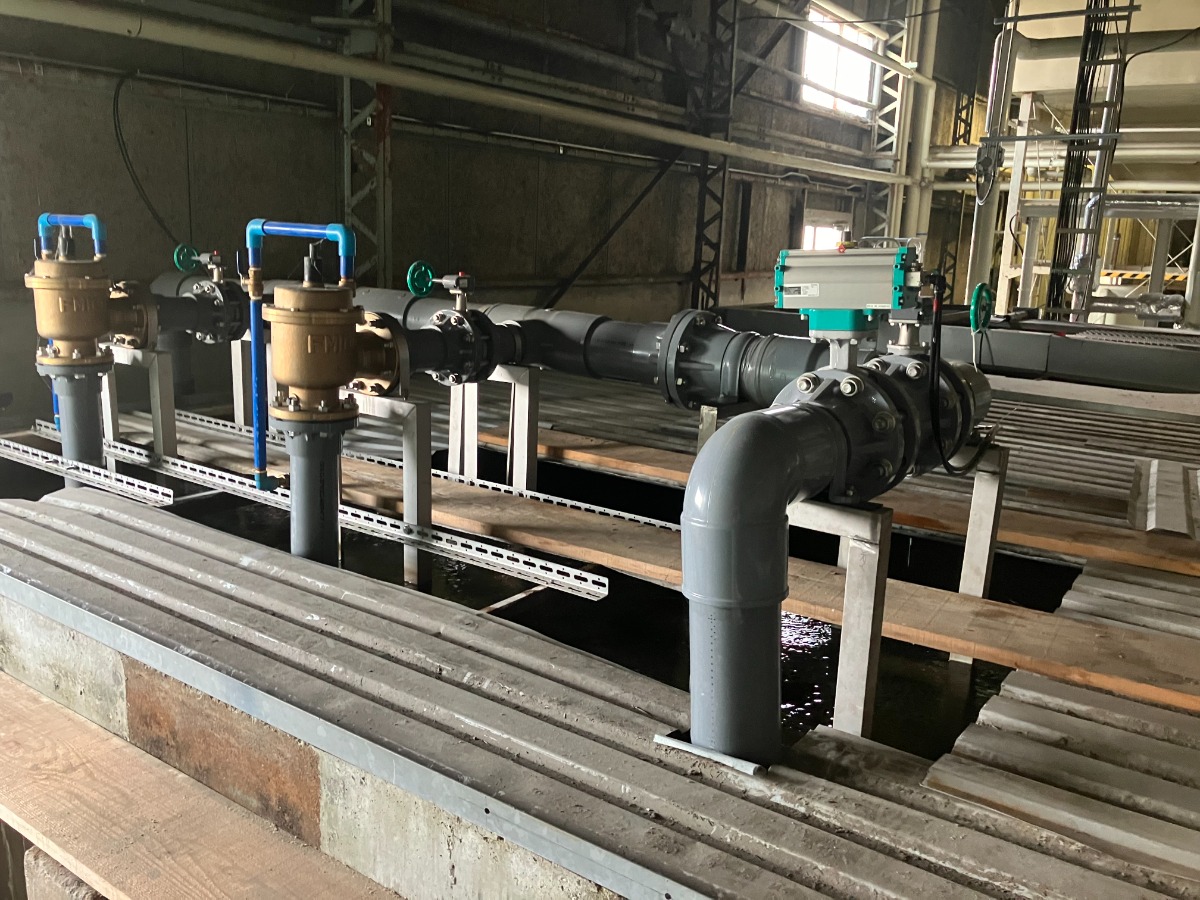
Water Conservation Measures Through Changes in Settings and Control Methods and Reuse
The Tokushima Plant of Nisshinbo Textile Inc. implemented water conservation measures in two manufacturing departments.
The first measure was by the Mobilon Production Division to maintain a constant temperature in the manufacturing room throughout the year to ensure product quality. In order to operate the equipment efficiently even in the high temperatures of summer, cooling water is sprayed onto the heat exchanger (aluminum fins) of the outdoor unit. In response, the company reduced water consumption by adjusting the temperature settings for water discharge.
The second measure was by the elastomer production department, which used water for cooling control in compressors, coolers, crushers, and extrusion molding machines among its equipment. Water was supplied continuously, but the automatic valves were added to the water supply pipes so that water was supplied only when necessary, such as during operation and cooling. Furthermore, in some facilities, cooling water that was previously drained once was reused as cooling water for other facilities.
As a result of these measures, the company reduced its annual water usage by 70,000 m3 in FY2024. The company will continue its efforts to make effective use of limited water resources.
